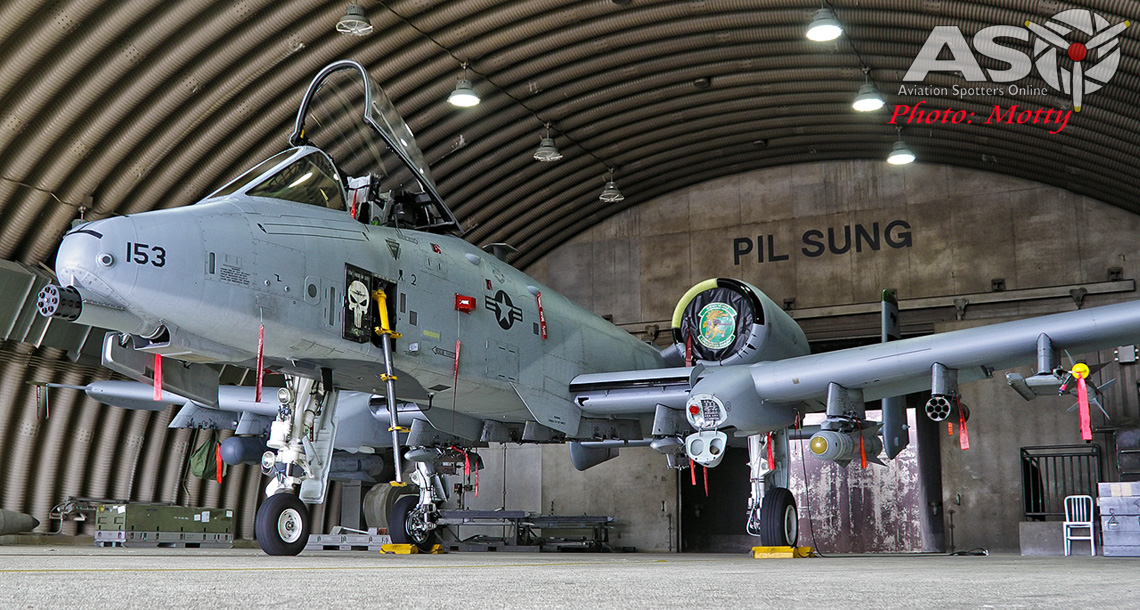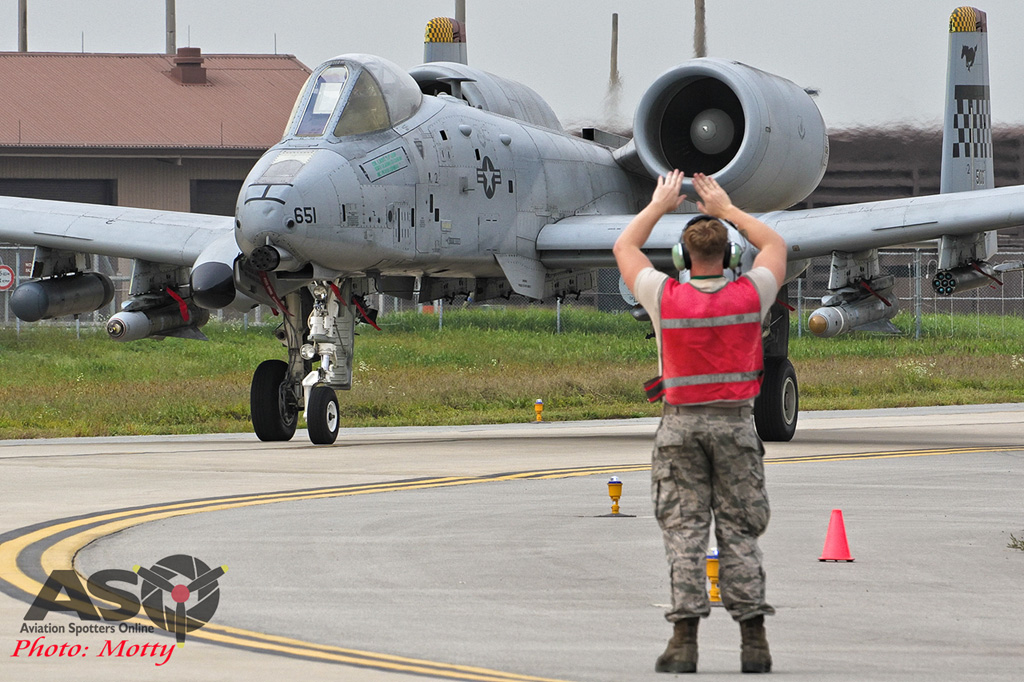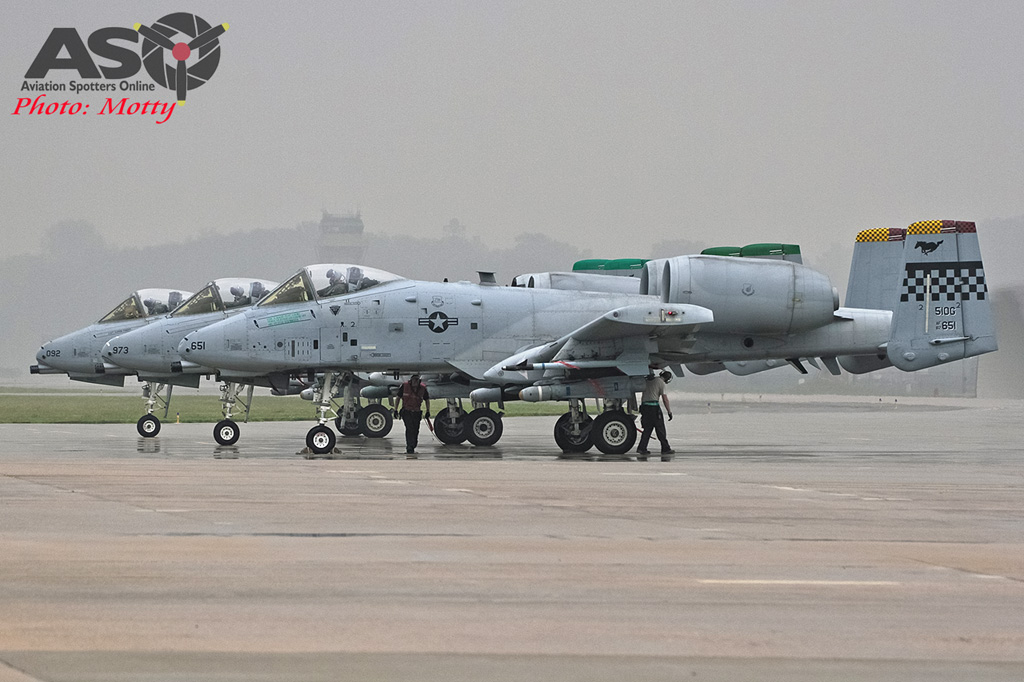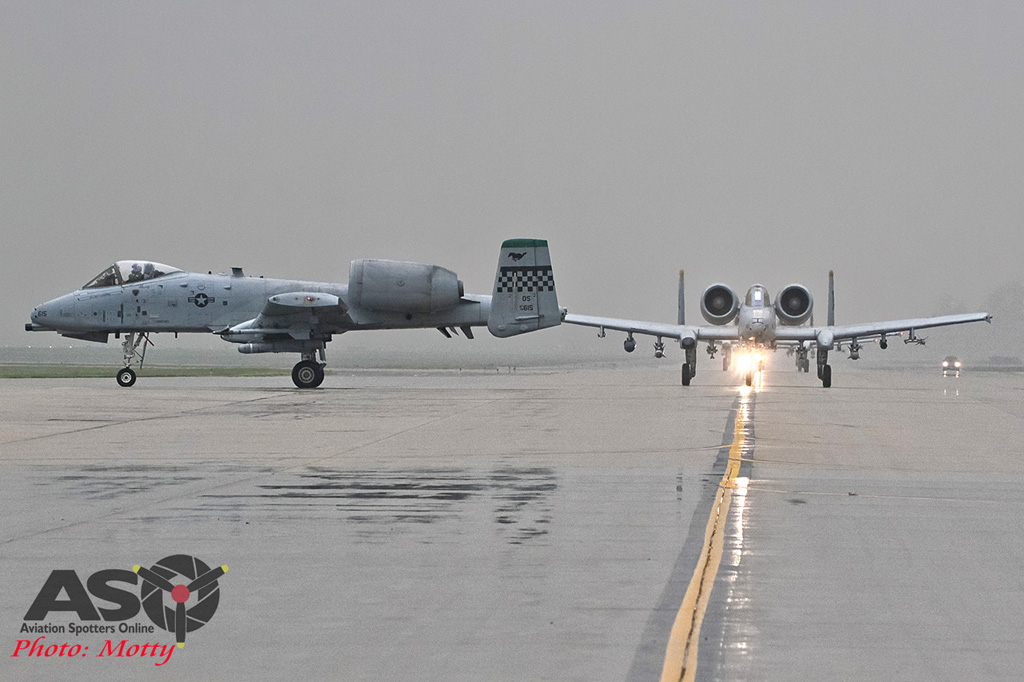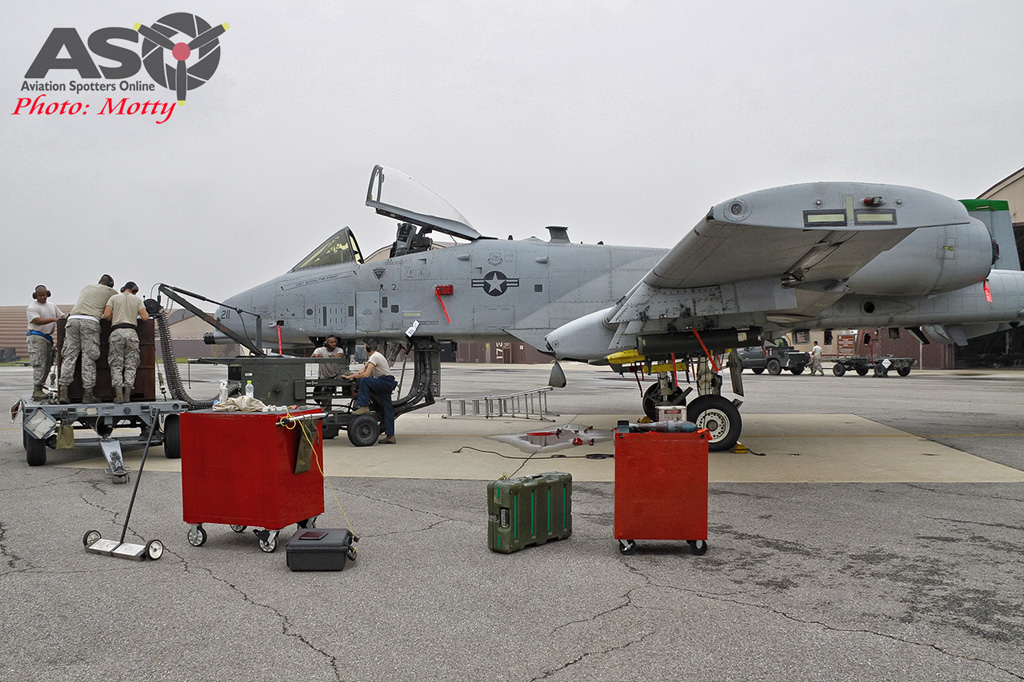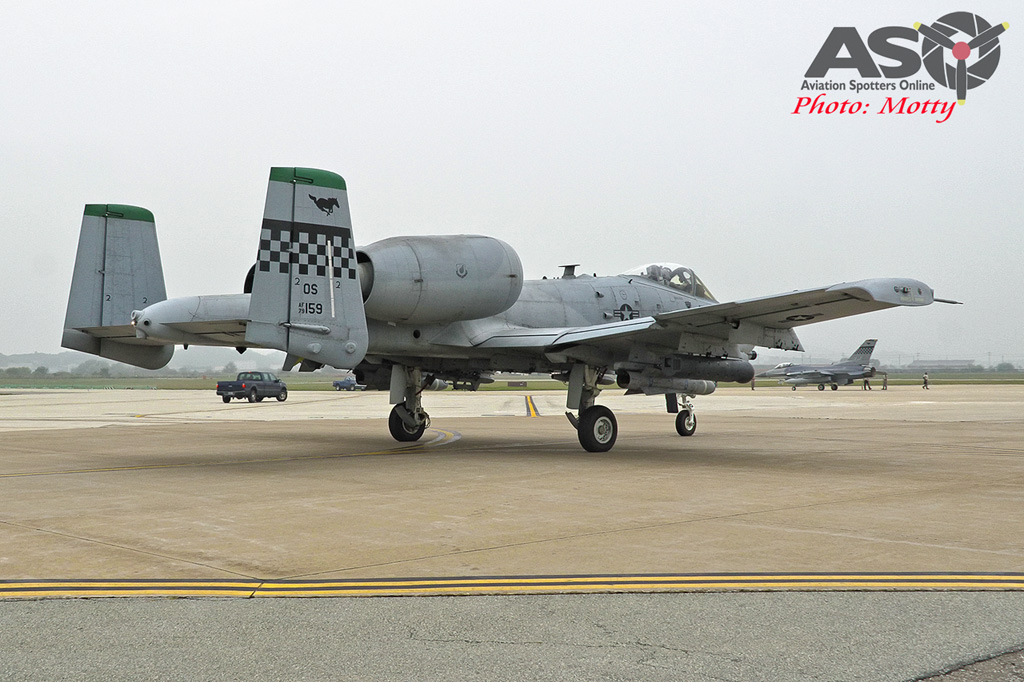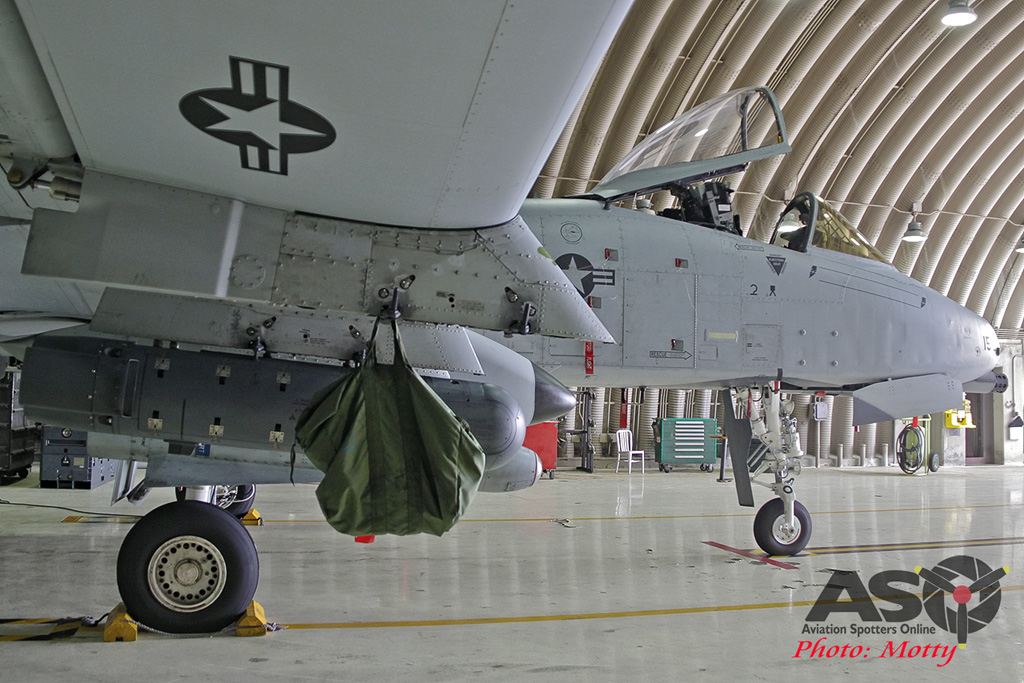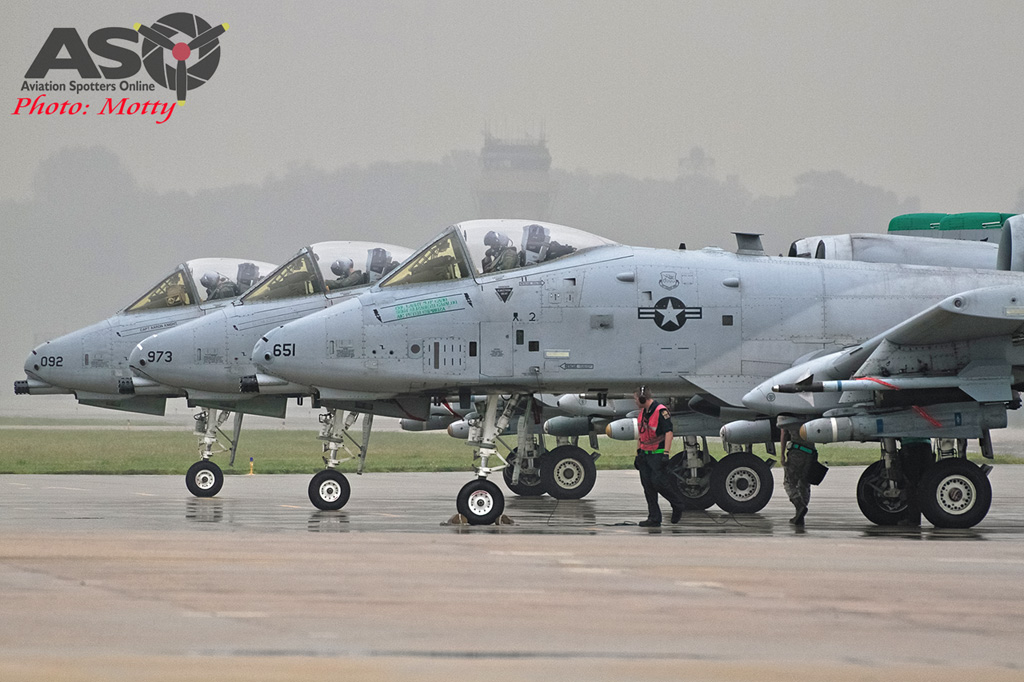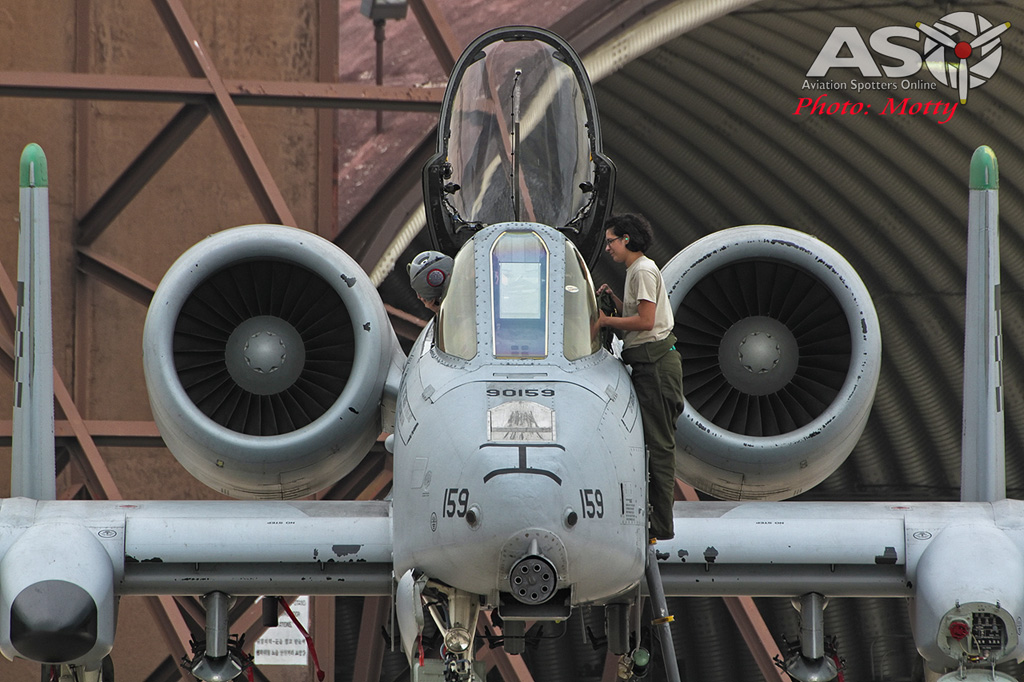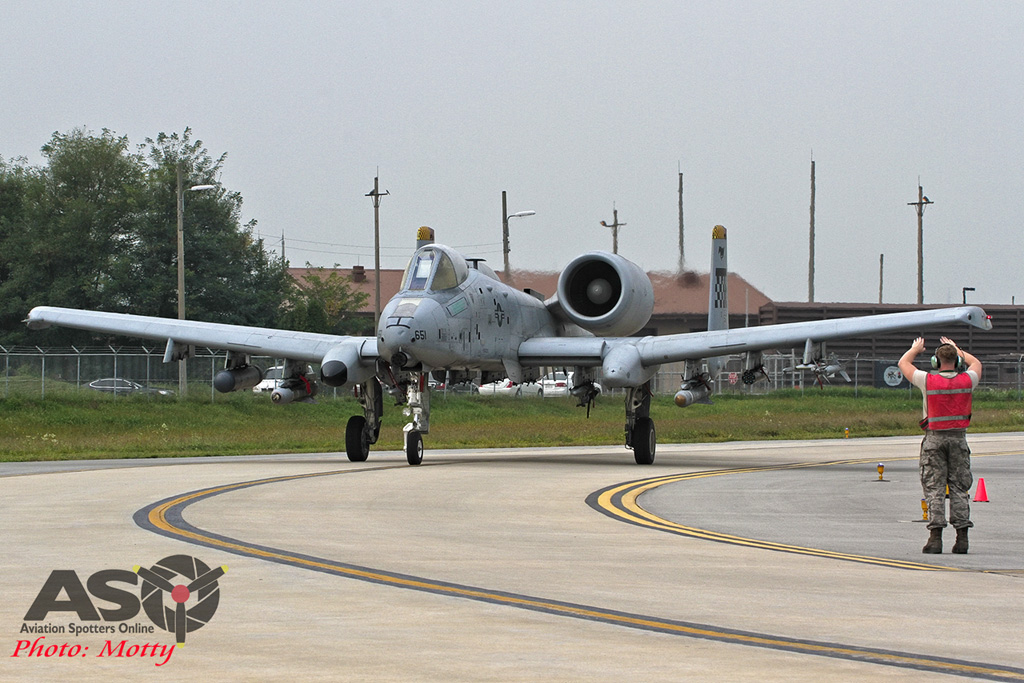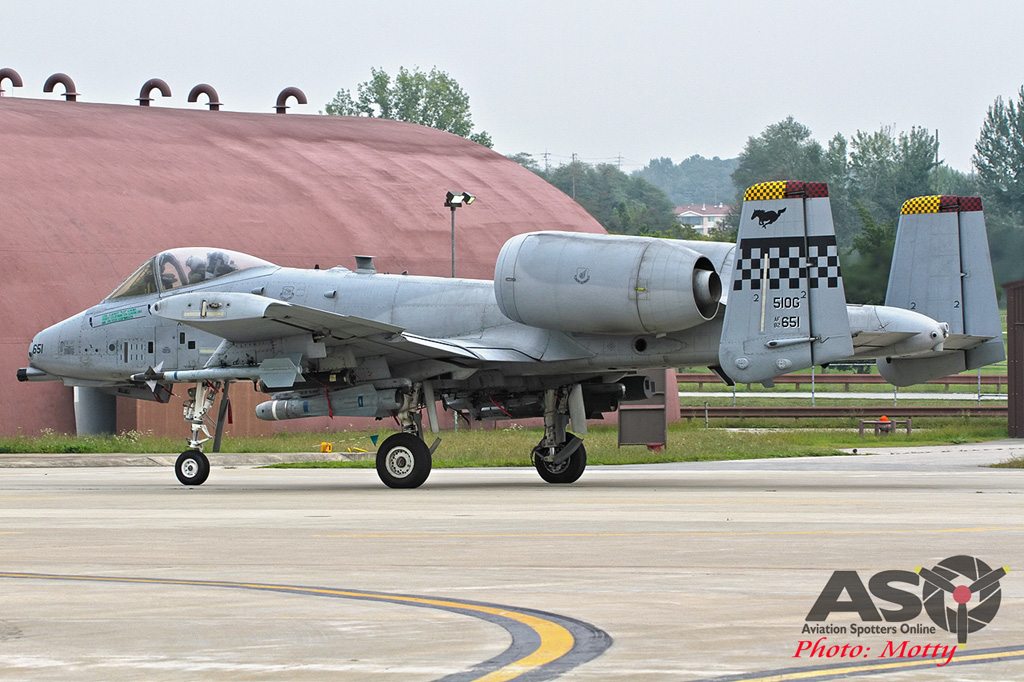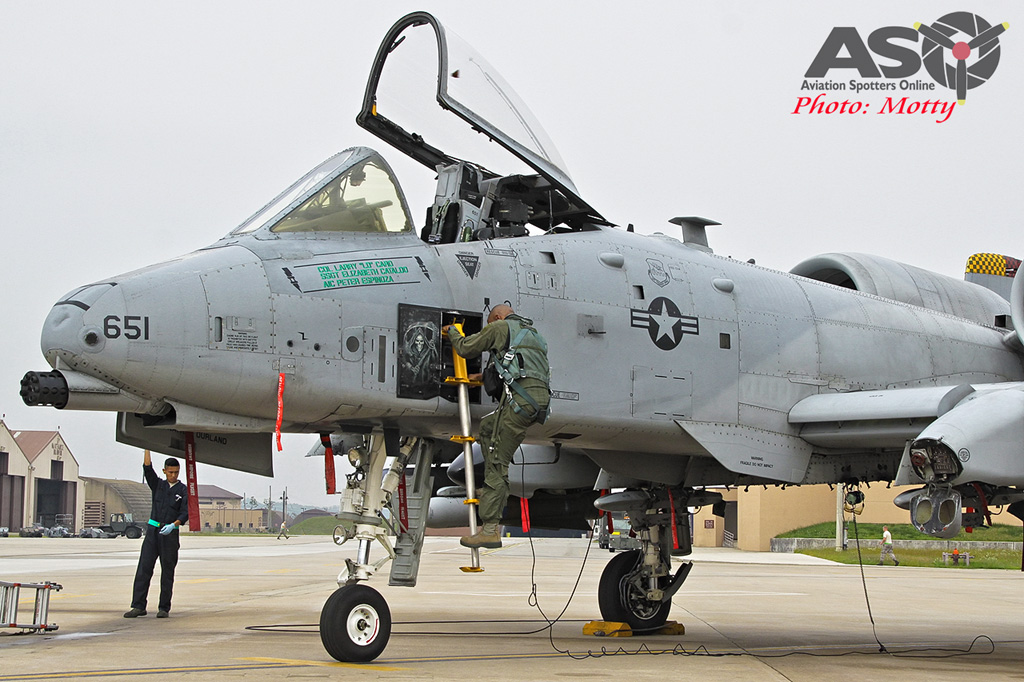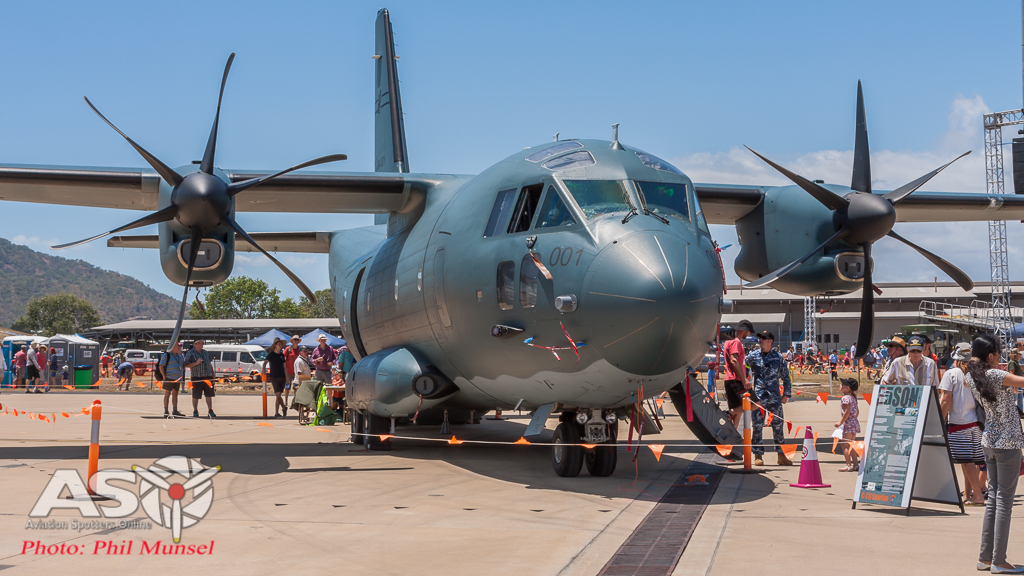A modern, high bypass turbofan makes a pretty characteristic sound, something of a whining, buzzing noise, which is common at most civilian airports around the world. But the shapes that were emerging out of the gloom towards us down the taxiway were no long-haul giant or budget airliner, rather it was some of the most menacing and distinctive outlines among modern military aircraft, the incredible A-10 Thunderbolt II.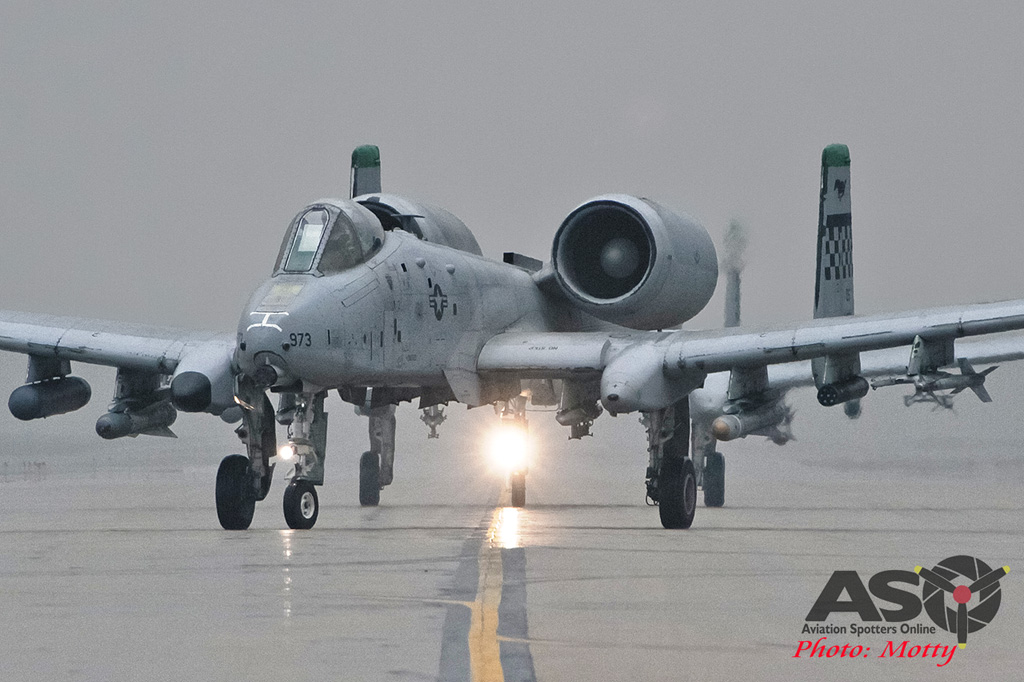
As you might have seen previously, I had the privilege of visiting the 51st FW at Osan, in September of 2016 (See that article HERE). One of the highlights of this visit was the fact that, since the withdrawal of the 354th Wing’s aircraft from Alaska in 2007, the 51st includes the only A-10 Thunderbolt II unit in the USAF’s PACific Air Force (PACAF) region, the 25th FS, the Assam Draggins, so this was an incredible opportunity to witness some of the 25th’s daily operations and get up-close and personal with this amazing aircraft.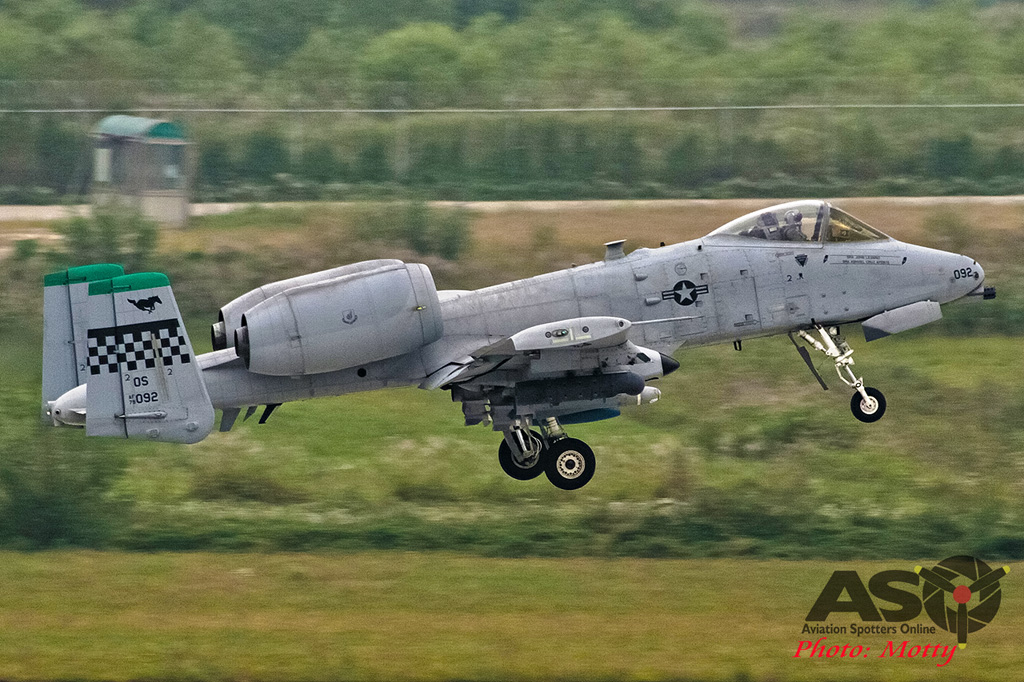
First flown in 1972, the Fairchild-Republic A-10, known as the “Warthog” to its friends, due to its ungainly (some might say ugly) yet aggressive shape and continuing a tradition of most Republic’s jet aircraft having some form of “Hog” in their nick-names, was specifically designed for the battlefield and close air support missions with the ability to carry and deliver a wide range and amount of ordnance, loiter in the combat area for extended periods, great agility and the ability to absorb significant damage yet get back to base safely.
Just about every aspect of the A-10’s design is defined by these capabilities. The large, straight wing provides high lift and great maneuverability while providing up to 11 hard-points for the carriage of a wide array of weapons, countermeasure pods and sensors. The high bypass turbofan engines (somewhat unusual for a front-line combat aircraft) provide good fuel efficiency for greater loiter times and a lower infrared signature while their unusual location, high up on the rear fuselage, means that the intakes are protected from possible FOD ingestion by the wing when operating off rough or unprepared fields, the exhaust is shielded from below and the side by the tailplane and vertical tails, further reducing the visible infrared signature to ground fired weapons, and it means that they can be left running during refueling and rearming between sorties, reducing turn-around times thereby increasing mission availability.
Other aspects of the design are less visible, like the armor plating throughout the structure to protect critical systems which includes a large titanium “tub” to protect the cockpit and pilot, multiple internal controls and systems to provide redundancy in the event of damage and self-sealing fuel tanks, located inside the fuselage (rather than the wings) for added protection. Even the fact that the main undercarriage isn’t fully enclosed when fully retracted, leaving the tyres partially exposed in order to help minimize damage to the fuselage, wings and pylons in the event that the aircraft has to make a wheels-up landing due to combat damage.
Probably the most well-known feature of the A-10 though would have to be its internal armament, the incredibly powerful 30mm GAU-8/A Avenger cannon. The original design requirement was developed around the need to carry this powerful gun, which was actually the result of its own development program, in parallel with that of the original competition which resulted in the A-10, and it too defines the features of the Warthog.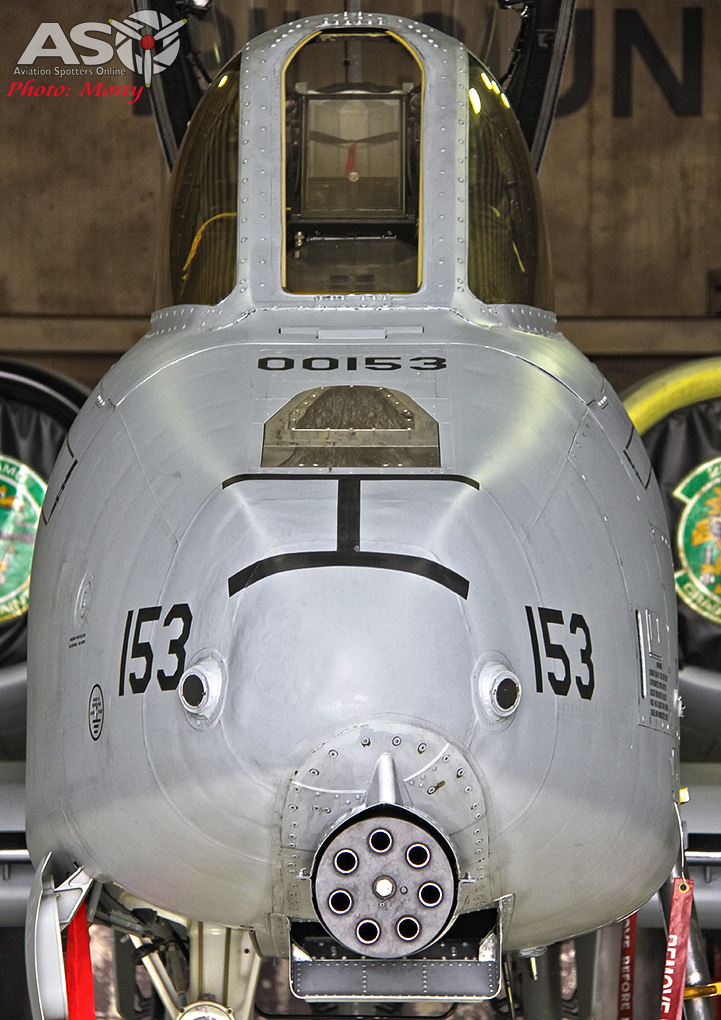
Impressive in every respect, the gun, with its feed mechanism and ammunition drum, is often compared to the size of a VW Beetle car, at 5.9M long, weighing-in at around 1800Kg (loaded), firing 30mm projectiles with shells the size of milk bottles (for those that can remember them) at 3900 rounds per minute at a muzzle velocity that sees the rounds drop only about 3M over a firing distance of 1.2Km, the GAU-8 is arguably considered to be the most powerful aircraft gun ever flown and is lethal against tanks and armored vehicles.
The sheer power of this weapon is further evidenced by the construction of the A-10’s forward fuselage in order to accommodate its volume and energy. The gun is mounted 2 degrees nose down and the barrels are mounted slightly to the left of the fuselage so that the firing barrel (the one in the 9 o’clock position when viewed from the front) is positioned directly on the aircraft’s centerline in order to minimize the pitch and yaw effects of the gun’s massive recoil when it’s fired, being roughly equivalent to the thrust from one of the A-10’s two engines at full power. This positioning has also necessitated the mounting of the nose undercarriage offset to the right of the fuselage.
It is this valuable capability and firepower that the 25th FS and their aircraft bring to the 51st FW at Osan and the region in general.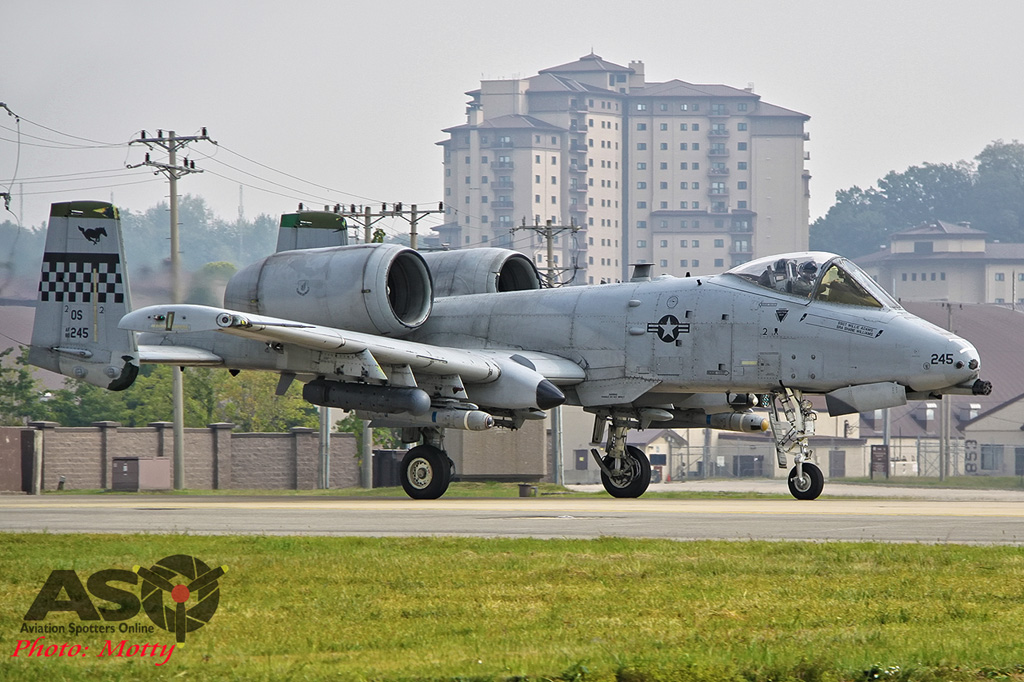
Originally formed in the US in 1941 as the 25th Pursuit Squadron and made a part of the 51st Pursuit Group shortly thereafter, an association that, despite some reassignments during the Vientam War, continues as the 51st FW to this day. One of the first units to sail from the US following the Japanese attack on Pearl Harbor, the 25th initially deployed to Karachi, India (via Australia) where they began flying their P-40s in operations across the Himalayan mountain range (known as “the Hump”) and Burma regions.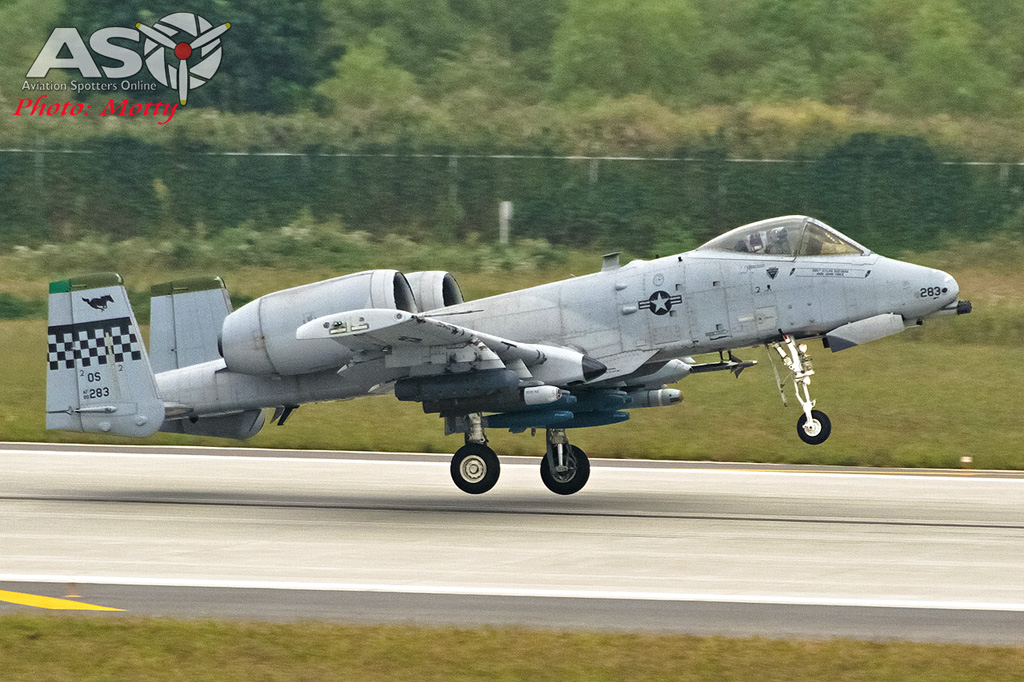
It was after they moved to Dinjan, in the Assam region, that they took their name “Assam Draggins” from the fact that, due to the mountainous terrain where they operated, pilots would usually “drag-in” on their approaches and landings, meaning that the pilots would use a shallower glide-slope and higher power setting on their landing approaches to the airfields due to the lower density air at high altitude. As the War progressed, the unit was later equipped with the P-38 and P-51.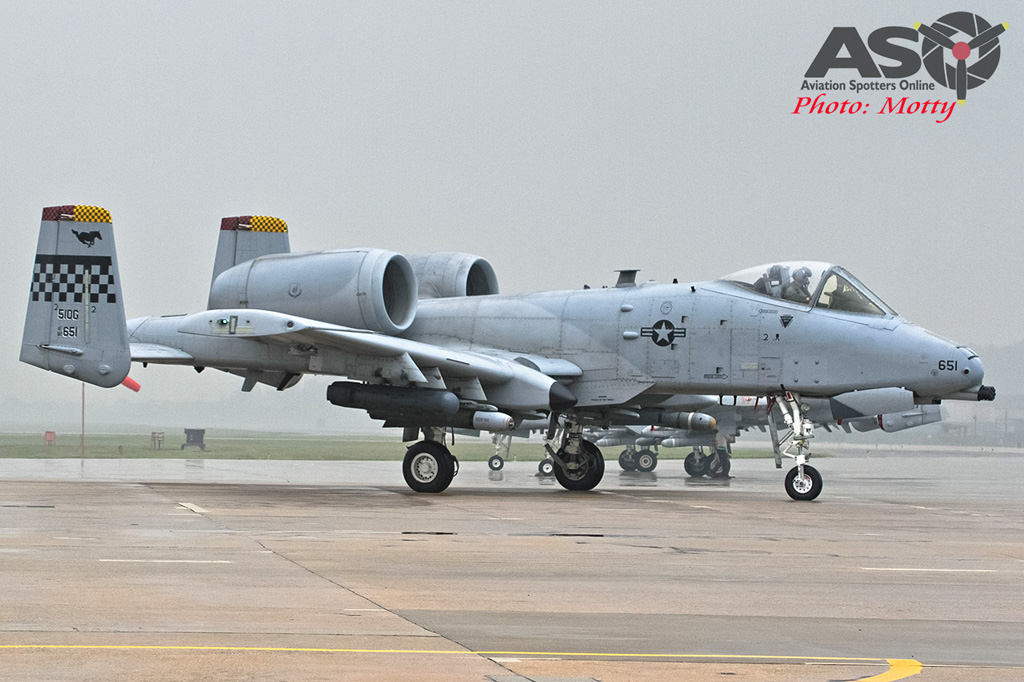
After WWII, the unit was reformed at Naha, Okinawa, Japan, flying P-47s and P-80s. It was called into action following the outbreak of the Korean War in 1950 and flew from several locations in Korea and Japan as the tide of battle came and went. In 1951 they began receiving the new F-86 Sabre, which allowed them to seek out and engage the North Korean / Chinese-Communist MiG-15s, and the checkered markings adopted by the 51st Fighter Interceptor Wing (FIW) on their Sabres at this time is the source of those worn on the tails of the 25th FS’ A-10s today. Following the cessation of hostilities in Korea, the 25th returned to Naha, as part of the 51st FIW.
In 1965 the 25th was separated from the 51st Tactical Fighter Wing (TFW) when it moved to the 33rd TFW at Eglin in Florida, USA in order to convert onto the F-4 Phantom before being assigned to the 8th TFW at Ubon, Thailand, in 1968 for operations during the Vietnam War.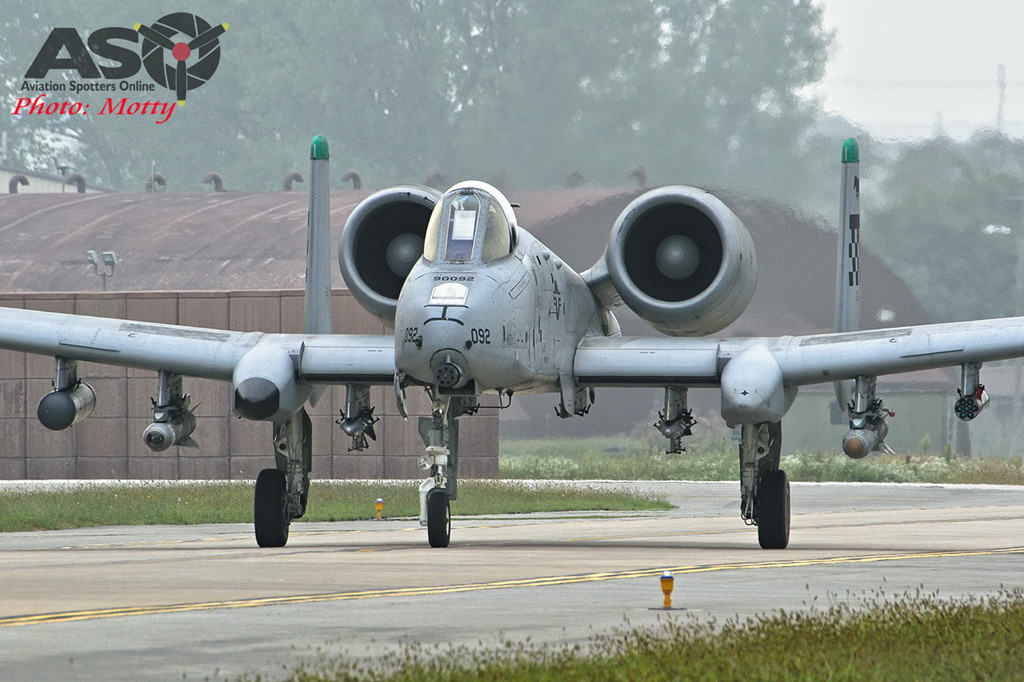
Following the US’ withdrawal from Vietnam in 1975, the 25th was transferred to the 18th TFW at Kadena on Okinawa, still with the F-4 until, in 1982, they re-established their connection to the 51st FW, and began re-equipping with their first A-10s at Suwon in South Korea. After a short period of de-activation between 1990 – 1993, the 25th was equipped, once again with the A-10, this time at Osan, where it remains today.
The 25th utilize the unique capabilities of the A-10 to provide Close Air Support (CAS), Forward Air Control (FAC), strike and Combat Search And Rescue (CSAR) for the various forces on the Korean peninsula or, indeed, wherever they may be called to serv. A demonstration of the CSAR role is a highlight of the Air Power Displays held at Osan too and you can see a report on the 2016 show and the A-10’s display HERE. The 25th sometimes also use their A-10s in the role of aggressors by simulating the Russian built Su-25 attack aircraft for allied ground or air forces.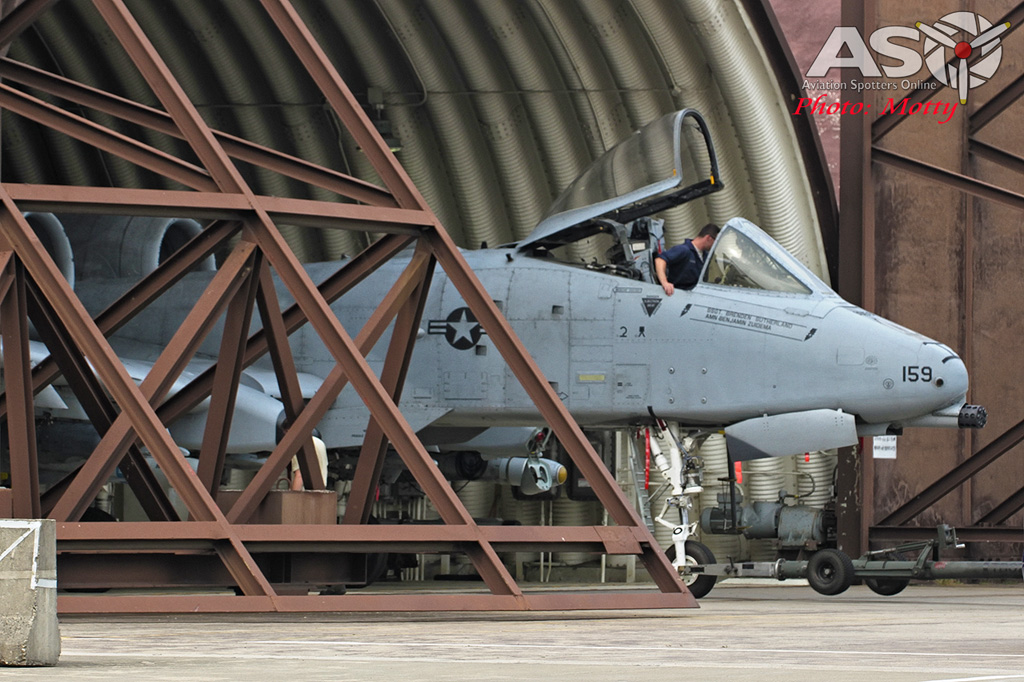
Korea can be a challenging environment in which to fly, with mountainous terrain, congested airspace and poor visibility, particularly when a significant portion of the mission is at low level but, as was the case during my visit, the men and women of the 25th are constantly training, whatever the conditions, to maintain the highest possible levels of readiness.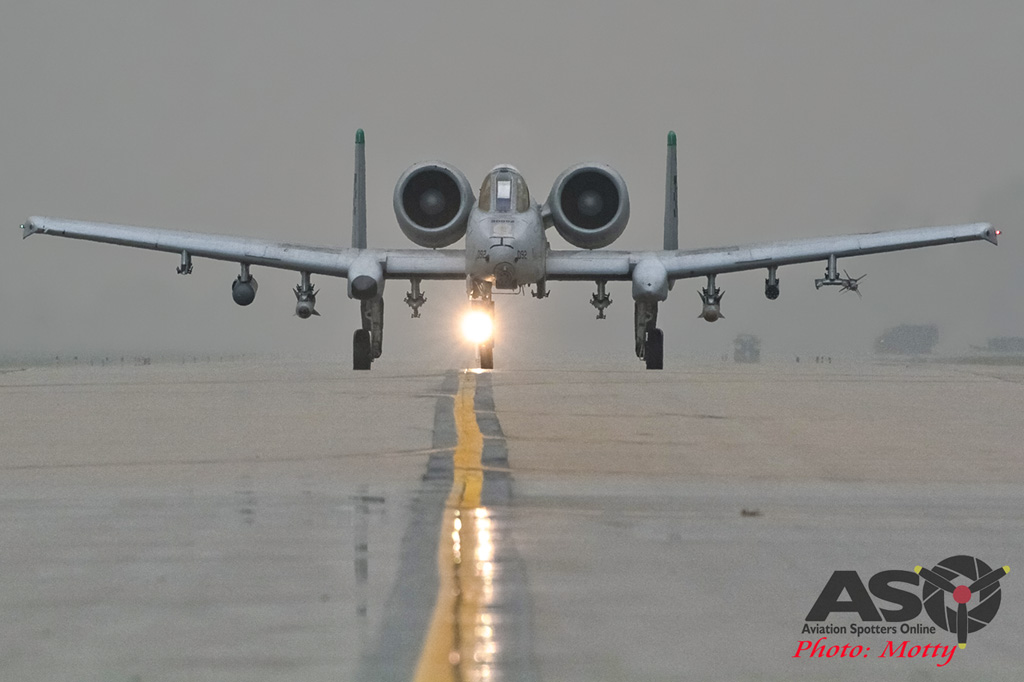
I was able to capture the A-10s at various locations around the base; from the tower, at the End Of Runway checks (EOR), the maze of taxiways around the base and, most impressively, their main dispersal area, appropriately called the Draggin’s Lair, with its lines of aircraft shelters with A-10s lurking inside, surrounding a central hard stand. The aircraft are prepared and taxi from the shelters and are quickly pushed back into to them upon return and the squadron’s motto “PIL SUNG” (which is a Korean battle cry meaning “to certain victory”) is emblazoned on the walls of the shelters.
Whilst originally designed with the mission of combating a large-scale armored advance across eastern Europe by Warsaw-Pact forces during the Cold War in mind, the A-10’s unique capabilities have developed and evolved to see it play a significant and valuable role in many other, real conflicts in more recent times, including both Gulf Wars and even today in on-going operations in the Middle East.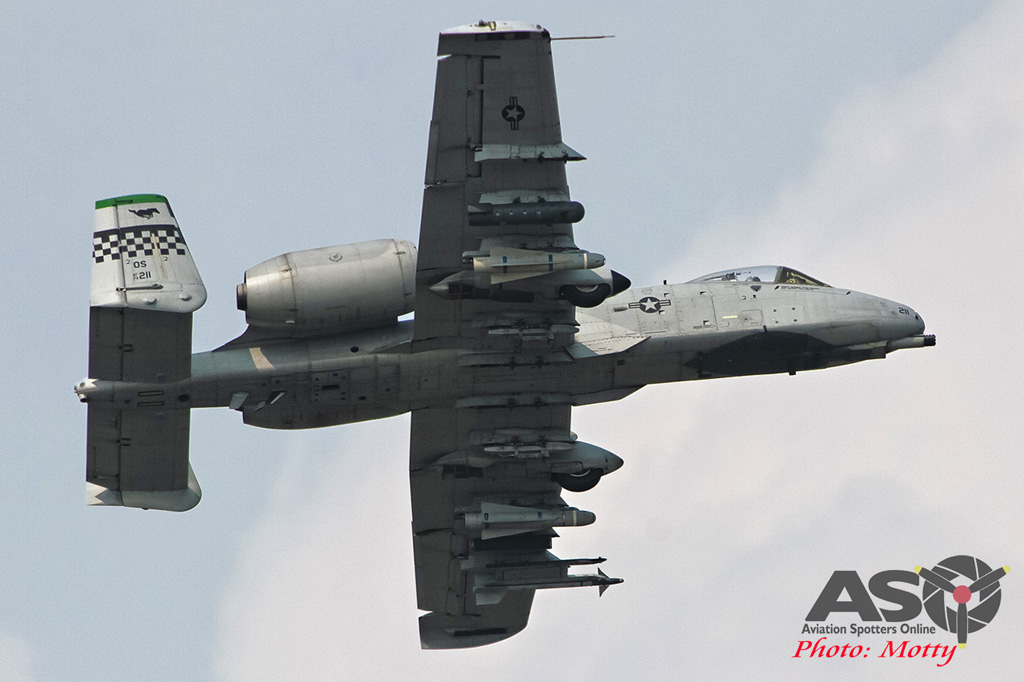
While there has been talk for many years about retiring the A-10, in order to save money for other projects, and that the CAS role could be suitably performed by other, more modern types such as the very expensive (and probably somewhat fragile) F-35, the Warthog has time and again proven that it still provides an extremely important capability on the modern battle field and, with the improved avionics, added weaponry and sensors and structural improvements provided by various upgrade programs over the years, the A-10, and the dedicated men and women who operate them, like those from the 25th FS at Osan, look set to still play a vital role for many years to come.
My sincere thanks to the men and women of the 51st FW and 25th FS for allowing me the privilege of visiting Osan and capturing the Assam Draggins’ operations. Pil Sung!
Motty.

